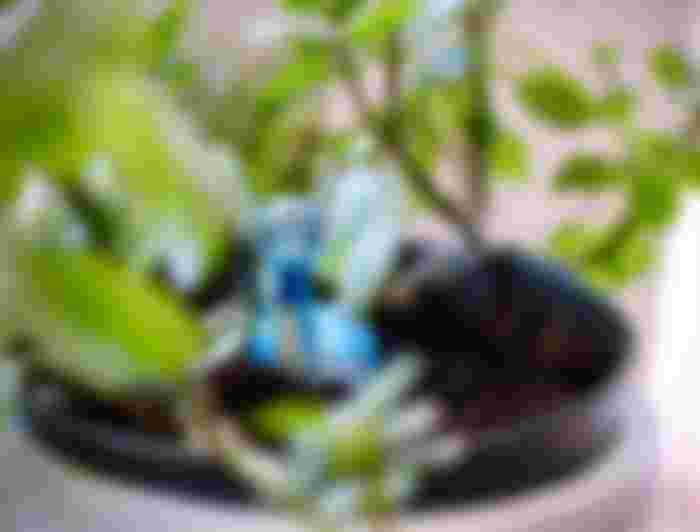Some years ago, comedian Joe Rogan did a standup routine about “vegan cats”. a little segment of vegans created a subculture out of feeding their pet cats nothing but vegetarian foods, thereby ensuring that these carnivorous animals die slow, agonizing, and premature deaths at the hands of pet owners who refused to eat meat out of compassion for other animals. you can't feed a cat vegetarian food and hope it'll live an extended healthy life unless the diet is satisfactorily supplemented with synthetic ingredients that the cat's gastrointestinal system cannot extract from natural vegetarian foods. Initially “vegan cats” people apparently didn't know this and caused needless suffering in their pets “out of compassion for animals”. Joe Rogan called out this contradiction and turned it into a comic book act.
Although “vegan cats” seems to be a comparatively new phenomenon within the West, Buddhist cultures of Asia have struggled with this exact same contradiction for millennia. regardless of how hard you are trying to become compassionate toward all life, you usually find yourself either endorsing brutality or spreading suffering. this is often one among the central existential horrors of Buddhism and it's also one among the central horrors of “Attack on Titan”.

“Attack on Titan”, just in case you probably did not know, maybe a dark fantasy horror manga is written by Hajime Isayama, who was born and raised about an hour far away from where I live. it's a nesting doll of a story, which begins (spoilers ahead) with a young boy whose mother is eaten to death by a carnivorous titan, against which he vows revenge, then later finds out that he himself shapeshifts into a titan. After many trials and tribulations, he conquers many of his goals and uncovers the key of the evil titans he had been fighting against, only to get that the evil titans are the shape-shifting product of an oppressed minority race who share the exact same origin because of the people he was trying to save lots of . Near the start of the story, a touched girl finds a butterfly being eaten by a praying mantid and realizes that she may be a part of a cruel and unforgiving world.
“Attack on Titan” may be a circular story. whenever the protagonist finds a breakthrough that would cause his victory, he's presented with a curse that boomerangs back to himself. Every ominous cliffhanger isn't just a threat of failure, but a threat that he's pursuing the incorrect objective.
Western fiction tends to be more linear. The hero finds an objective, sets forth on a journey, meets obstacles, suffers setbacks, nearly fails, fights an impossible battle, and prevails. There are cliffhangers within the process, but they're always the threat of death or the threat of failure, not the threat that the hero may very well be the villain, neither is it a threat that there's no answer of the fate of becoming the matter.
“Ring” may be a best-selling Japanese novel by Koji Suzuki which was subsequently made into a series of flicks, first in Japanese and later remade in Hollywood with an American cast. The very name suggests a circular story. The story follows a person passionately following a mystery who finds out that he's actually perpetuating the matter by his involvement with it.
Frank Baire asked me about Japanese horror and the way it's fundamentally different. that's a difficult question and one that needed some thought. There are not any doubt many superficial differences, like commonly used tropes. The frequency of certain tropes in Japanese fiction is different from that of Western fiction. Writers also tend to fixate on the outline of various things. within the West, male writers are accused of preferentially describing women by their bodies, in Japan, by their clothes. But those small differences aside, what's the elemental difference that creates Japanese horror different?

Horror is an expression of fear, and what we fear and the way we fear it shapes our expression of horror. Japanese people have a tendency to possess a relaxed attitude toward religion. a part of it stems from a now-forgotten tradition of building temples within the grounds of shrines to balance out the age old conflict between Buddhism and Shintoism. (The practice was banned when the Meiji Emperor made Shintoism the state religion within the 19th century and most Buddhist temples on Shinto shrine grounds were torn down.) Over the centuries, most of the population lost their religious partisanship and paid respects to both religions. Thus our traditions involving ghosts and evil spirits became a assortment of both philosophies.
Shitoism may be a shamanistic worship which emphasizes group harmony as a virtue within the mortal world, and places emphasis on quelling angry spirits in handling the dead. Anyone who dies with sufficient unquelled anger or resentment can become an angry spirit, and may cause misfortunes to whatever living people to whom this anger is directed. Thus, it's necessary that folks die calm, respectable deaths that they will reasonably accept as their fate. Meanwhile, it's not an honest thing to desecrate or unseal tombs and monuments that are intended to quell the spirit of these who died with resentment or vengeance. Also, since Shintoism may be a shamanistic sort of religion , there's a belief that any animate thing can become a god. A boar , for instance , can become a god if it lives long enough.
Buddhism may be a religion that has two separate philosophies about the afterlife; reincarnation and nirvana. These two are very difficult concepts that have strict definitions, but by the time the ideas were imported across half the Asian continent and across seas to Japan, adopted and modified by the local clergy, then disseminated to the masses, the first philosophical meanings of the 2 were just about lost and dumbed right down to “you are either reborn as something else, otherwise you attend heaven”. This was also mixed with the concept of Hell, which apparently arrived in Japan before Christianity was properly introduced. therefore the concept of life after death in Japanese Buddhism was pretty involved by the Edo period (1603-1867) when most of our concept of horror was born.
There is also the Buddhist notion of Karma, which may be a very difficult philosophy if you would like to know it accurately. it's actually divided into three distinct kinds, and everyone features a complicated theology behind it. But as we all know, this has also been dumbed right down to generally mean that once you benefit deeds, goodies will happen to you, and once you do bad deeds, bad things will happen to you.
Authors of horror stories old and new have probed these philosophies in varying depths. Some writers go very deep into scholarly theology, and a few writers just wing it. there's many religious traditions to dive into. Natsuhiko Kyogoku may be a modern writer who has led the revival within the interest in medieval ghosts and monsters, a number of whose novels are translated into English. His monster stories were a serious influence on “Inuyasha” a horror/adventure manga (and subsequently an animated series) by Rumiko Takahashi. Kyogoku delves deep into the mythology. Takahashi substantially less so. “Inuyasha” features a Shinto priestess who died and was resurrected as an evil ghost.

Christopher Nolan famously wrote within the script of his acclaimed movie “Dark Knight”, “You either die a hero or live long enough to ascertain yourself become a villain”. Hayao Miyazaki’s “Princess Monoke” opens by introducing a boar god that has became an evil demon of vengeance. The threat of seeing yourself become a villain remains an undertone throughout the story. Christopher Nolan’s Batman may be a tragic hero who, a minimum of up to the second installment of the trilogy, cannot escape his fate of becoming a villain. this is often one among the various reasons that the tonal shift of the third part of the trilogy, “Dark Knight Rises”, feels somewhat forced. If it were a Japanese narrative, it might have ended without redemption or escape, but with an acceptance of cyclic fate.
So the fear that drives Japanese horror is a minimum of partially, the fear of circular purgatory. The narrative is driven in such how that you simply are always in peril of returning to your old mistakes, or your mistakes returning to you. there's an underlying fear that you simply could also be wandering in a circle within the un-mapped labyrinth of destiny, where your only hope isn't an escape or redemption, but a peaceful acceptance of returning full circle.



Hello, my friend.
I learned a lot from your article about the philosophy behind Japanese horror fiction. A mixture of religions and beliefs that make up a narrative and graphic style.
My children are fans of Japanese anime to the extent that one of them wanted to learn some of the oriental languages.
Of course, I also saw some fondness in them for Manga. I'll be honest, until recently, I found out about the erotic and sexual content of it. I didn't have enough attention back then. I thought they were the same. Dragon Ball Z or the Knights of the Zodiac. LOL.
Now my oldest son is a 32-year-old adult, I will ask him if he is still a fan of these artistic modalities.
On the other hand, the comparison of styles in terms of linear or circular horror was quite illustrative.
Happy day my friend.